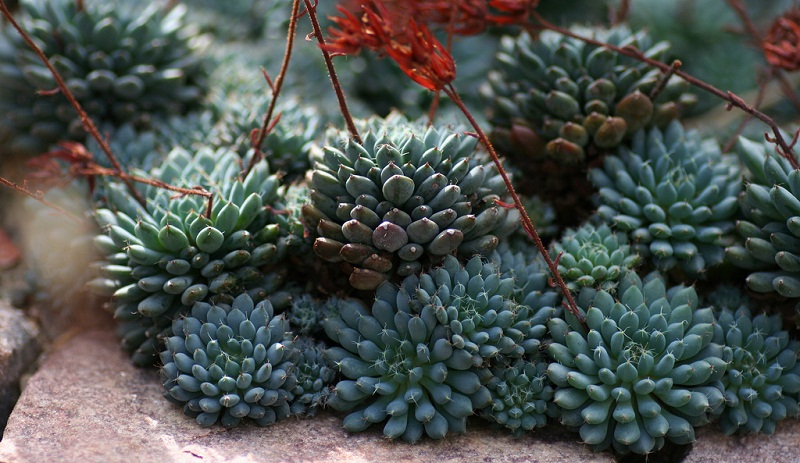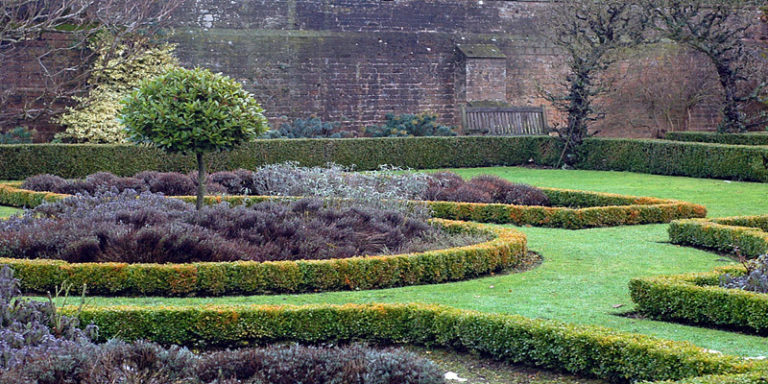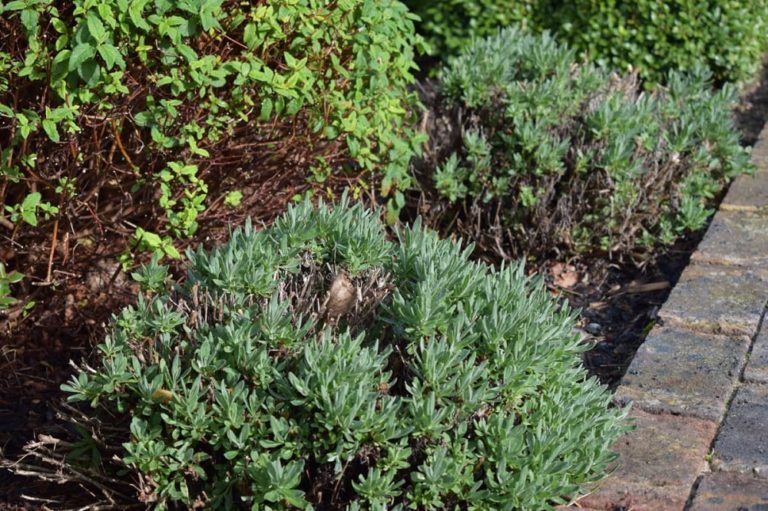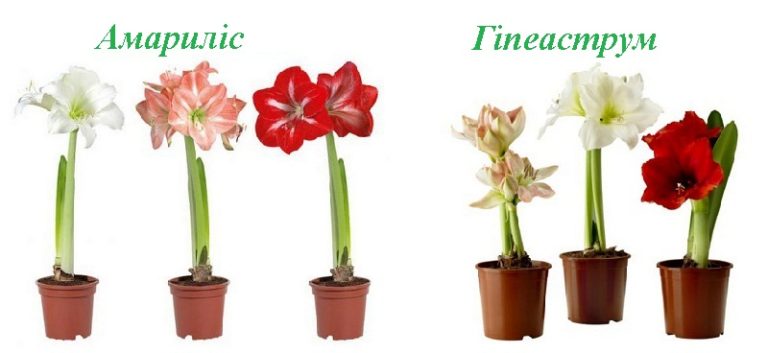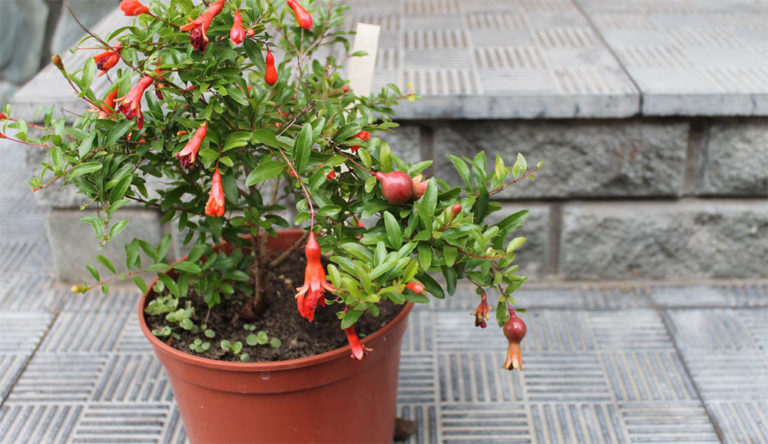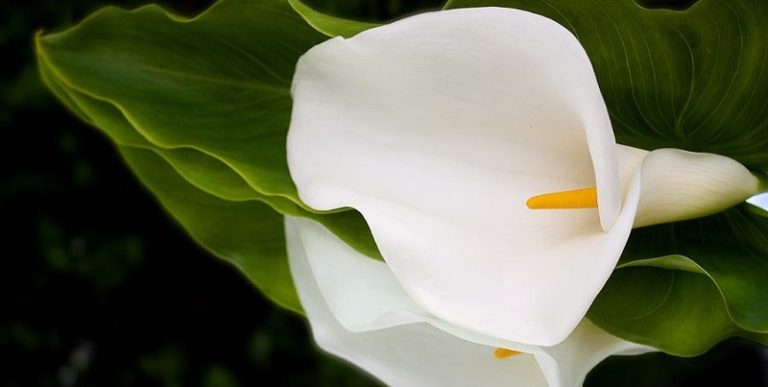Echeverria: care and reproduction
Echeveria (Echeveria) is a succulent perennial herbaceous undersized plant, sometimes bushy, with a short branched fleshy trunk. The leaves of echeveria are placed very densely apart in a spiral, forming a rosette. The leaf blade is grayish-white (plaque) in color, in some species it is lowered, this leaf surface protects the plant from direct sunlight.
In its natural environment, echeveria and its species can be found in Mexico from Texas to California, as well as in Peru. This plant was named in honor of the artist Atanasio Echeverría Codoi, who published a book on the flora of Mexico.
Echeveria blooms. During flowering, a peduncle grows between the stems with tiny leaves, on which racemose or umbrella-shaped inflorescences are formed, the color of the flowers is different, it can be red, orange, yellow.
Echeveria is used for alpine slides as an annual plant. Echeveria is often referred to as the “stone rose” because of its appearance.
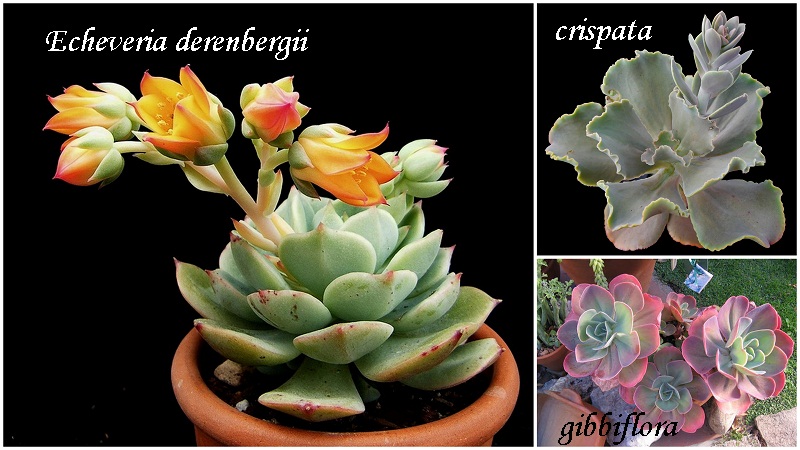
- Echeveria agavoides (with red tint leaves)
- Echeveria leucotricha (leaf-fleshed, densely pubescent with white hairs, reddish at the top)
- Echeveria fulgens (leaves collected in a rosette, sometimes notched at the top, bluish at the edges, slightly wavy)
- Echeveria gibbiflora (leaves are large up to 25 cm long and up to 15 cm wide, spatulate, the upper part of the leaf is slightly concave and the lower part is convex with wavy edges and a pointed tip)
- Echeveria Carunculata (leaves twisted and fleshy )
- Echeverria Metallica (with purple-green or bronze-green leaves and with a white or red border)
- Echeveria crispata (leaves wavy at the edges, with a metallic sheen)
- Echeveria derenbergii (leaves are small wide, light green, with a light gray bloom, reddish at the edges)
- Echeveria setos (leaves are dense, almost spherical rosettes made up of more than 100 grayish-dark green leaves)
- Echeveria laui, Echeveria peacockii, Echeveria pulvinata, Echeveria shaviana.
Types of echeveria:
Найчастіше нам зустрічаються такі види ечеверії:
How to care for echeveria
Caring for echeveria is easy if you follow the conditions listed below.
Light brightness for echeveria
Echeverias are light-loving succulent plants that tolerate direct sunlight, so they need to choose bright, slightly sunny locations. In bright sun, the waxy coating on the leaf plate becomes coarser, and the leaves become bluish-white or grayish-white, the tips turn red. In the summer heat, the leaves wrinkle, the rosette shrinks.
Newly acquired plants are gradually accustomed to direct sunlight.
Air temperature for echeveria
In the spring-summer period, echeveria can tolerate fairly high temperatures, but the most comfortable temperature is +22-+27 ° C. In winter, succulent plants can grow in cold rooms, where the air temperature is +8 ° C, and also hibernate at normal room temperatures (+18-+20 ° C).
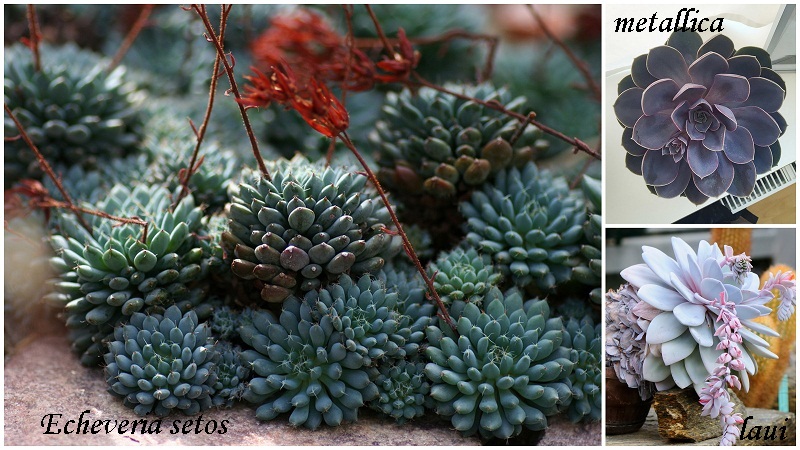
Watering and humidity for echeveria
In the spring and summer, echeveria is watered moderately. Between waterings, the earthen clod should dry to the bottom of the pot. Echeverias do not tolerate excess moisture in the soil. On hot summer days, the leaves of the echeveria may wrinkle, this is a sign that the plant needs to be watered. Watering in the autumn-winter period is very special – once every 30-40 days, and in cold rooms – once every 2 months. A sign of watering in winter is wilted leaves. Use soft and warm water for irrigation. When watering, make sure that water does not get on the leaves and in the middle of the outlet (the plant may rot). Succulent plants do not need spraying.
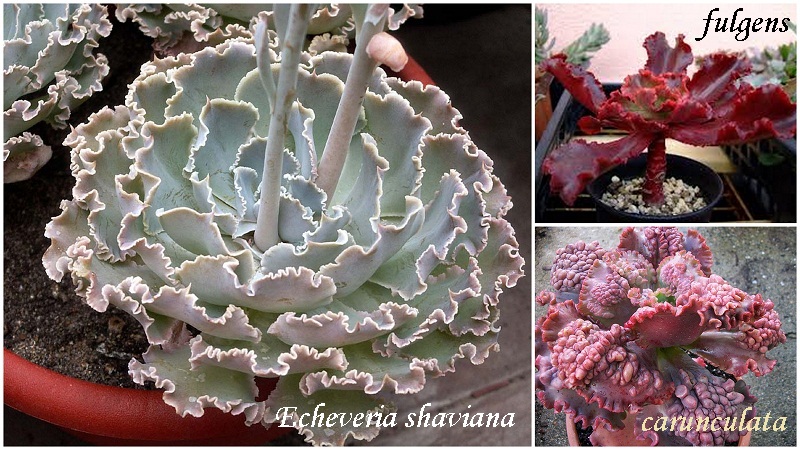
Fertilizer for echeveria
Echeveria is fed only in the summer 1 time in 30 days with fertilizers for cacti, the dose is divided by 2 than indicated in the instructions.
Repotting and soil for echeveria
For echeveria, a ready-made substrate for cacti is suitable. The composition of the soil should include molehills, coarse sand with the addition of charcoal.
It is not necessary to transplant succulent plants very often: 1 time in 3-4 years. A layer of drainage is poured at the bottom of the pot. Echeveria grows well in hydroponics.
Compositions of succulents in pots. 45 ideas
Reproduction of echeveria
Echeverias are propagated by leaves, cuttings, basal rosettes and seeds. Shrubs are also propagated by the tops of shoots.
Diseases and pests
Diseases occur with improper care: powdery mildew when the plant is overflowing.

Possible difficulties:
Leaf spots – damage to the waxy coating of the leaves when touching the plant or when water gets in.
The leaves and stem are blackened, the leaves come off easily – too cold and damp place.
The leaves are deformed – the use of unsuitable insecticides.
The rosettes become loose, the leaves lengthen and turn pale – lack of light.
The leaves are small and small – the plant is cramped in a pot or underwatered.

